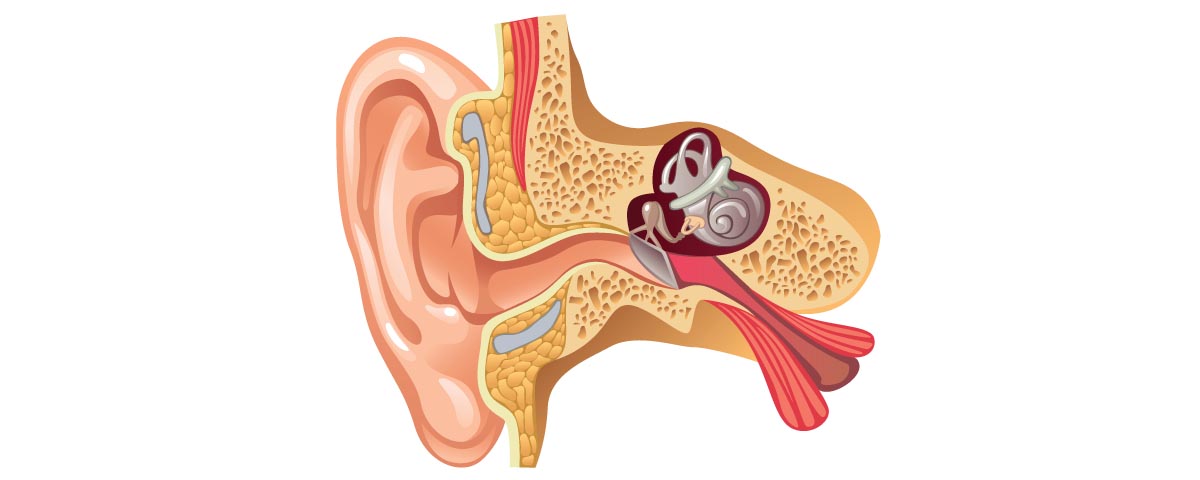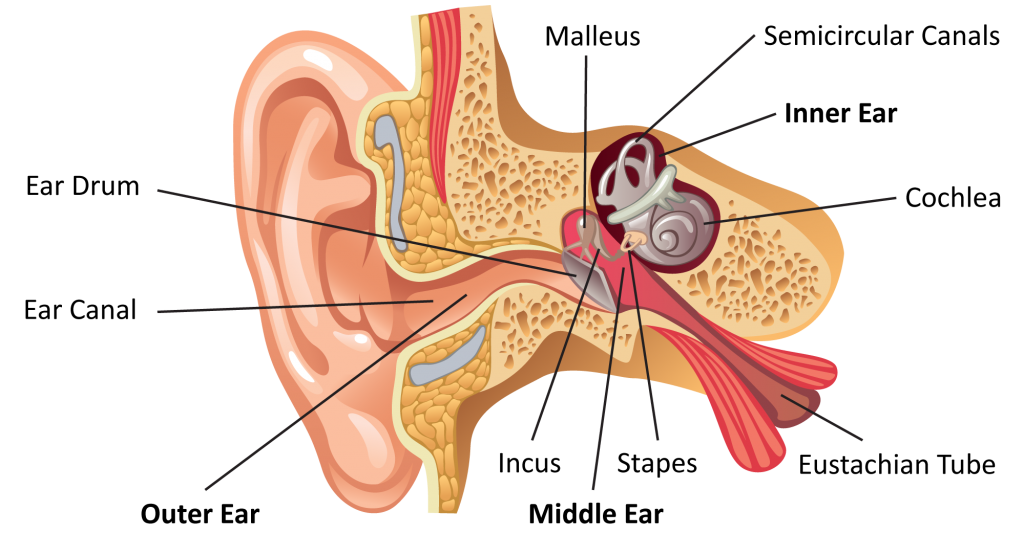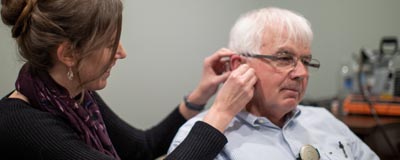There are three main sections of our hearing system: the outer ear, the middle ear, and the inner ear (please see image above). Each section of the ear plays a role in the way we perceive sound.
First Step: Sound waves travel through the outer ear. Once the waves reach the end of the ear canal the ear drum begins to vibrate transforming the sound wave energy into mechanical energy.
Second Step: The vibration of the ear drum initiates movement of the three ear bones. These bones are called the malleus, incus and stapes. The malleus, which is directly attached to the ear drum, immediately moves in response to the vibrations. This motion in turn moves the incus which triggers the activation of the stapes.
Third Step: The stapes then transmits the mechanical energy (carried by the bones) into the inner ear in the form of hydraulic energy. The stapes collides with the cochlea which sends a wave of fluid moving across the cochlea’s membrane. This fluid stimulates the hair cells on the membrane of the cochlea, where the hair cells convert the hydraulic energy into electric energy.
Fourth Step: The auditory nerve is stimulated by the hair cells, which in turn conducts the signals to the brain for further processing. The brain is able to processes sound by determining where in the cochlea the signal originates. The base of the cochlea (where the stapes collides) is responsible for higher frequency where the apex (the farthest point from the stapes) is responsible for lower frequency sounds.







